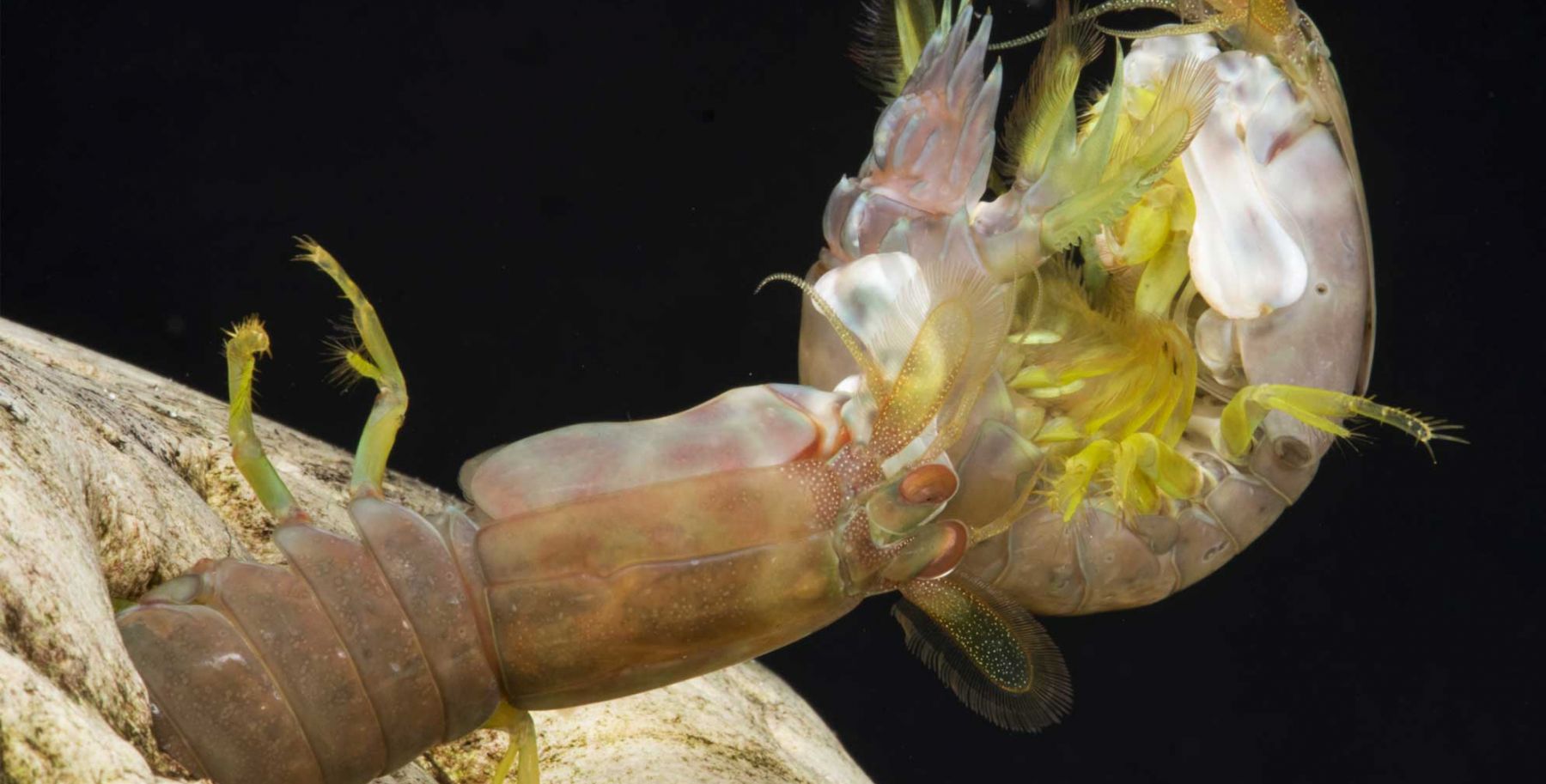An animal’s ability to gather information, and act on that information, is necessarily limited by physical mechanisms like biomechanics and physiology. For example, the ability to produce a movement-based signal is linked to the physics of movement. I integrate principles from biomechanics and physiology to understand the mechanisms underlying the dynamic displays we see in animals.
Mantis shrimp are a good system for understanding the physical mechanisms of behavior because their high-speed strikes are powered by an exoskeletal spring. Years of basic biomechanics research has shown how energy flows through the spring system. I have integrated this knowledge of spring energy into my work on contest behavior to understand how energy flow functions in ritualized combat in mantis shrimp. This work has inspired a framework for future studies at the intersection of biomechanics, physiology, and behavior.
Discoveries
- During ritualized striking, the energy of mantis shrimp strikes correlates positively with body size; however, the energy of feeding strikes does not. This suggests that strike energy is used by mantis shrimp to gather information on body size during contests (Green et al., Journal of Experimental Biology, 2019).
- In collaboration with Alejandro Rico-Guevara (Univ. Washington), I organized a symposium on “The Physical Mechanisms of Behavior” to build further links between mechanics and behavior across systems: from mating, to fighting, to feeding (Green et al., Integrative and Comparative Biology, 2021).
- The mantis shrimp telson can dissipate over 90% of the energy it receives from a strike through a combination of its material properties and through the behavior of lifting the telson off the substrate (Green, under review, Journal of Experimental Biology. Available on BioRxiv: https://doi.org/10.1101/2023.11.20.567920).
Future Questions
- How do the energetics of movement measured biomechanically match up with energetics measured with other techniques, such as oxygen metabolism? Do we find the same answers with different tools?
- How do telson and appendage morphology evolve alongside aggressive behavior? Do species that use a greater number of strikes have more armored telsons?
- What further connections can be made between mechanics and behavior, across fields?
